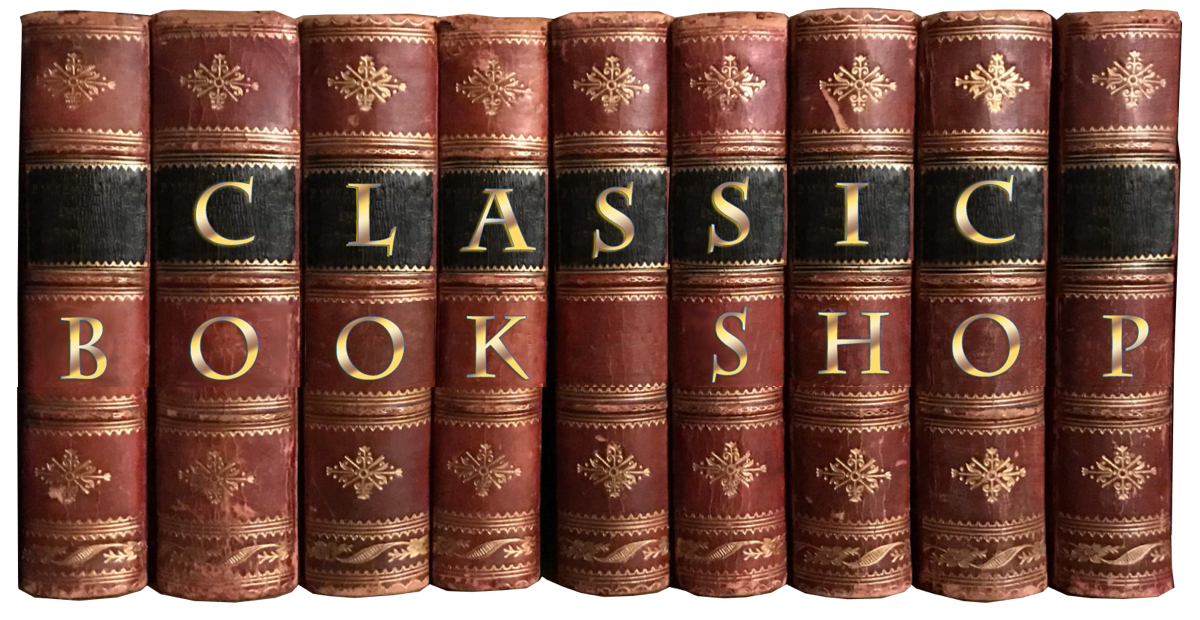
We Buy And Sell Books
SOME THOUGHTS ON DESCRIBING
THE CONDITION OF BOOKS

We Buy And Sell Books
SOME THOUGHTS ON DESCRIBING
THE CONDITION OF BOOKS
There is a common attitude that the description of books is a matter of subjective opinion. Nothing could be farther from the truth, and it's, in fact, an attitude for lazy or dishonest dealers. The physical condition of a book or its dust jacket is not a debatable issue, but one directly perceivable by anyone with eyes and a nose. To express what one sees (or occasionally smells) does require some knowledge of book construction and experience of typical book wear. More importantly it requires carefulness and a blunt honesty.
A blunt honesty means that one understands that there is an objective standard for judging condition. Condition is not based on some sliding scale that varies with the age or value of the book. The standard is the "new book," that is to say its original condition. Every change from the original condition deserves mention whether in general or specfic terms.
Such change, broadly speaking, falls into two categories: natural wear and deliberate damage. Natural wear includes the corners and edges of the cover (are they worn or bumped?), the inner and outer hinges (are they cracked or loose?), the top and fore-edge of the book (are they soiled?), the head and tail of the spine (are they frayed or torn?), the binding of the book (is it tight or loose, or is the spine cocked?), and the front and back cover (are they soiled or scratched or in any way damaged?). Strong smells - mildew, cigar smoke, or fuel-oil smells - should also be noted, though usually such books are worthless and shouldn't be listed. Deliberate damage includes any names, dates, inscriptions, notes, underlining (or high-lighting) that may be written in the book. Bookplates, remainder marks, as well as ex-library marks are also all examples of deliberate damage. Any sincere book dealer specifically mentions these types of condition flaws. They are not ignored nor left implied in some broad general description. Finally, all books with illustrations, maps or charts must be collated and anything missing should be listed as such.
With the new book as the standard for description it must be understood that new means directly from the publisher (or distributor) and has no damage or wear. I must digress here and explain that the term "new" is ambiguous: capable of referring to price, condition, or lack of previous ownership. When used in regard to condition "mint" is superior to "new" as a book can be damaged either in transit from the publisher or while in the new book store. Not all new books are in new condition. However, the term mint has been discredited by naive people who thought that everything in the new book store was in perfect, ideal condition. (Having worked in new book stores, many years ago, I know from personal experience that this is not the case.) Since we are stuck with this term new in place of mint, we have to make the best we can of it. Hence, new condition means the original condition.
"Very Fine" condition means the same as new only the book is not directly from the publisher/distributor. "Fine" means that there is no major or minor wear that is worth describing; it's almost like new but one can tell that it is not. "Very Good" means that there's some minor wear, but not as much as a good copy. "Good" condition means that it's an average, nice copy, not collectible but not awful or disgusting. "Fair" condition means that there's a lot of wear, but it's still usable. "Poor" condition means that it's falling apart or has major wear or flaws, but it's still complete. "Ex-Library" is self explanatory; it's the lowest of all conditions, but like the pawn in chess it can be worthwhile as a bargain reading copy - the copy you loan to friends or read in the bathtub. Still the intelligent dealer does not describe a book as "fine" and then add "ex-library" after it. A book may be ex-library an then, as and after-thought, be in fine condition; but there is no fine book that is ex-library.
We do not describe books as "adequate," "standard," "acceptable," or any variation of these. This is a modern, meaningless approach to describing that reveals the incompetence, lack of care, or mass-quantity approach of their sellers. Similarly, the expressive "good for its age" is a lazy and non-objective description that the serious dealer forbids himself.
Even with experience, knowledge, and critical examination mistakes in description do happen. There are literally dozens of places to look for wear or damage, and when one is listing hundreds or thousands of books a week oversights do occur. Usually these are caught before the book is shipped out, but if a customer does receive a book that is not in proper condition then we are glad to refund the cost of the order upon return of the book.
© David Oyerly 2007